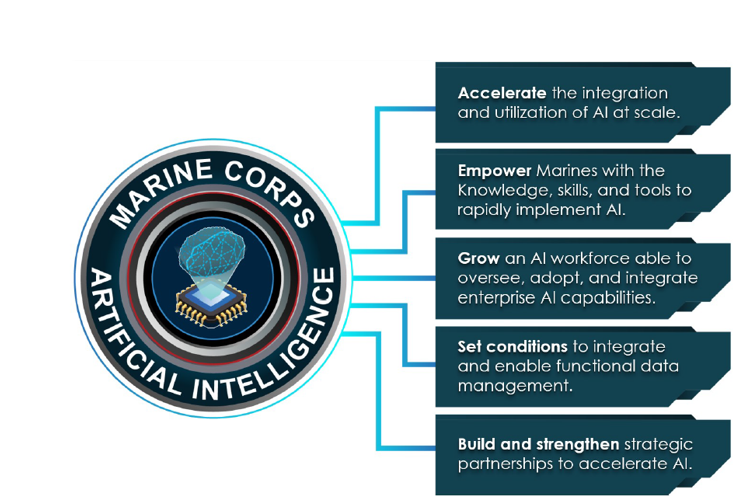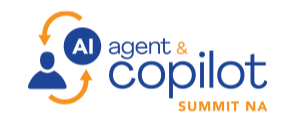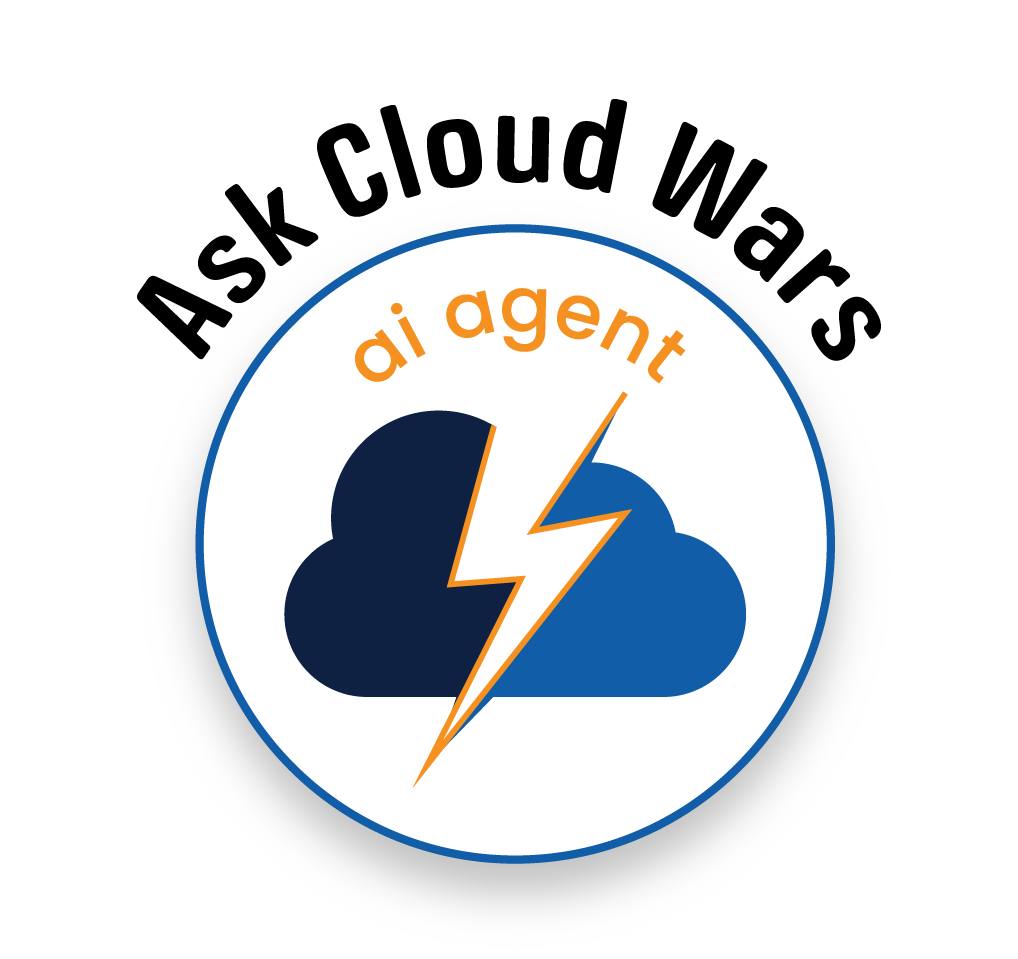
When the United States Marine Corps publishes an AI Implementation Plan, it’s well worth the investment to review that plan for technology and execution insights that can translate in commercial enterprise settings.
Version 1.0 of the Corps’ recently published plan lays out the “problem statement” related to data management, an approach to digital transformation pilots, data as the foundation for AI, infrastructure, workforce, and governance recommendations.
The plan’s positioning — and verbiage — make it valuable in delivering insights and objectives that apply readily in a commercial setting. This includes:
- “USMC recognizes AI as a transformative technology to enhance decision advantage” — in the Marines’ case, that applies to the “evolving landscape of modern warfare”
- A goal to “enhance decision making at the tactical edge”
- The plan calls for a Digital Transformation Pilot project as a “near-term vehicle for implementation and to gauge and measure success” while achieving unity of effort
My take: USMC’s expertise and discipline in planning, execution, and measuring results is tailor- made to the use of fast-evolving technology that can provide strategic advantage across a wide-ranging set of use cases and industries.
Problem Statement
The plan starts with a problem statement focused on data management — and that’s a great starting place given the central role that data plays in successful AI implementations. It notes that the current data climate poses a number of challenges and the plan aims to address them while focusing on these shortcomings:
- Misalignment of AI relative to mission objectives
- Gaps in AI competency
- Difficulty deploying AI at scale from the enterprise to the tactical edge
- Legacy governance frameworks that stifle innovation
- Barriers to collaboration and partnerships
The plan provides solid context into data’s value as well as how AI is used today in combat:
“In a forward command post, Marines employ AI-enabled capabilities to analyze multilingual intercepts, sensor data, and satellite imagery in seconds. Language processing AI systems assist in producing concise summaries for decision makers while computer vision systems augment analysts in identifying enemy locations and movements to accelerate the kill chain, allowing commanders to focus on operations rather than receiving information overload.”
The plan’s goal is to empower Marines with AI to support “decisive information advantage” while operationalizing that vision. Its guiding principles are detailed in this infographic:

Below are details on what I view as five of the most important elements of the strategy as defined in the Marine Corps implementation plan:
Digital Transformation Pilot Project
The plan calls for establishing Digital Transformation Teams as the immediate vehicle for implementing its plan; those teams will:
- Digitize and optimize processes, establish data pipelines, deliver advanced analytics, and implement AI solutions
- Advise commanders on opportunities and risks with AI utilization
- Validate existing processes for technology integration
Data as AI’s Foundation
A “Service Data Office” is addressing challenges that include:
- Data lifecycle management, building a framework that covers generation, storage, transformation, and delivery of data with a lifecycle management approach
- Data quality and governance to ensure complete, accurate data that meets relevant compliance requirements
- A scalable architecture aligned with zero trust principles to streamline development, security, and operations pipelines
- Change management, which is required to prevent resistance that could stifle innovation. The focus is on broad organizational adoption — in a secure manner
It’s no coincidence that data optimization and change management are assigned such prominence in this strategy. These are two of the foundational elements of AI strategy and success, and they’ve been rightfully assigned top priority.
AI Infrastructure
As AI increasingly influences all levels of decision-making, the report calls out the importance of having reliable infrastructure to handle the complexities that AI introduces. The infrastructure requirements named specifically are:
- Storage and compute: infrastructure that can scale on demand to meet AI requirements
- Development environment: DevSecOps and MLOps must be unified to support code development, continuous integration and continuous development, testing, and deployment.
- Resource Management: Optimizing resources — available at the right time to the right teams — for AI workloads
- ML platform: this platform must consolidate data management, model training, experimentation, and deployment

AI Agent & Copilot Summit is an AI-first event to define opportunities, impact, and outcomes with Microsoft Copilot and agents. Building on its 2025 success, the 2026 event takes place March 17-19 in San Diego. Get more details.
Workforce Skills and AI Readiness
The plan calls for “proliferation of digital and AI skills through the Total Force and upskilling specialized Marines who can solve complex data, analytics, and AI challenges,” and it names three core groups that are affected:
- Those who use AI to enhance operational effectiveness
- Those who build, maintain, and refine advanced digital and AI tech
- Leaders required to make risk decisions on the use of AI
It goes on to identify the development of comprehensive AI training and education so that Marines understand AI capabilities and limitations, as well as risks they face when leveraging AI in making critical decisions.
Governance
An office has been created by the Marines specifically for policy, governance, and oversight to inform requirements for AI, and it’s tasked with providing alignment of policy, resourcing decisions, and ethical and responsible AI principles.
Closing Thoughts
Discipline, operational planning, and focus on execution are core skills that we associate with military branches and especially the Marines. It should come as no surprise, then, that the Marine Corps’ AI Implementation Plan hews closely to these long-standing strengths while assigning AI a priority as a potentially powerful weapon in military engagement.
At the same time, it’s fascinating to see the parallels with corporate IT thinking and practices — data management, governance, workforce training/retraining — that apply to military service as well as they do to large enterprises. Here’s hoping enterprises can learn from the Marines’ plans and vice versa.
Final note: I plan to conduct a video interview with a Marine Corps spokesperson in early July to dive more deeply into this plan, its implications, and the Corps’ approach to AI and tech strategy more broadly.
Ask Cloud Wars AI Agent about this analysis









